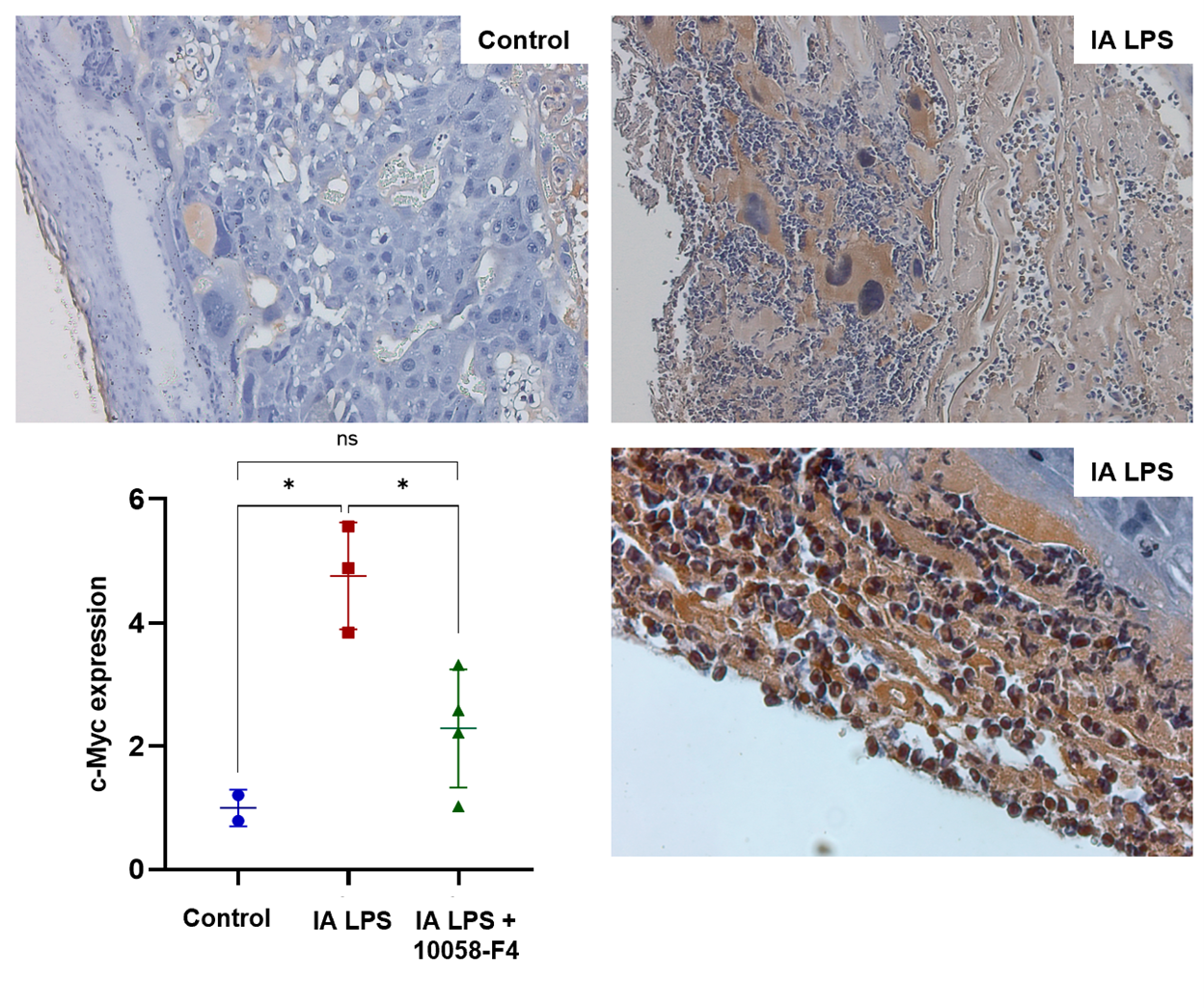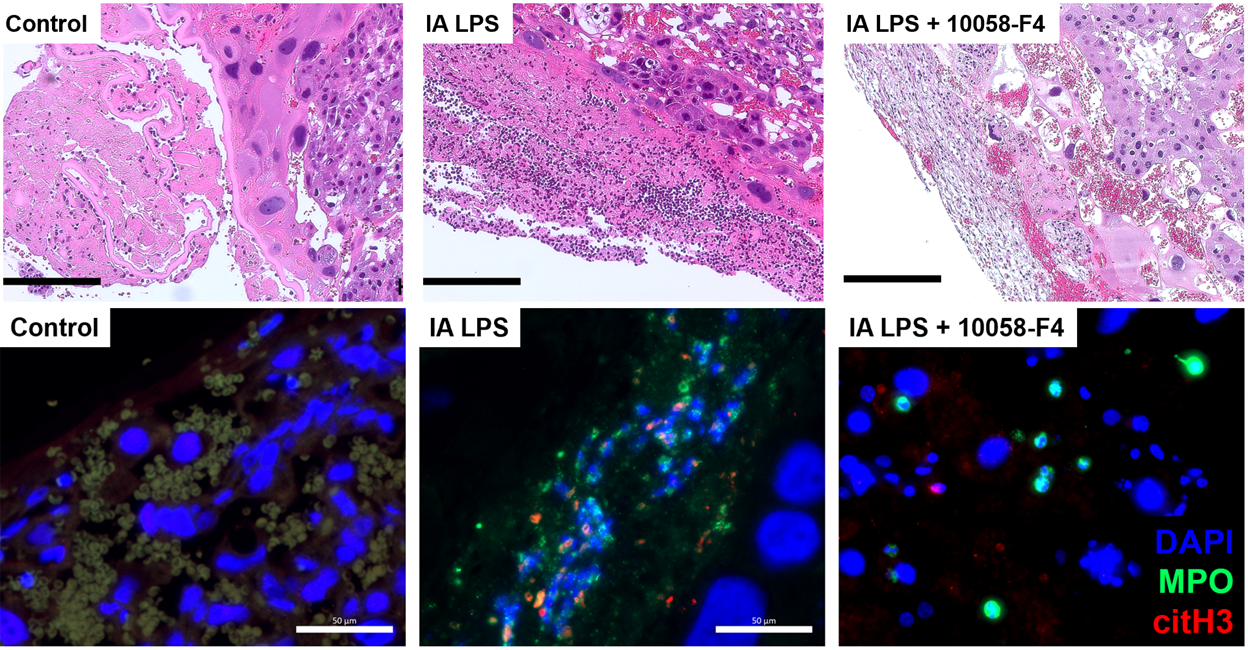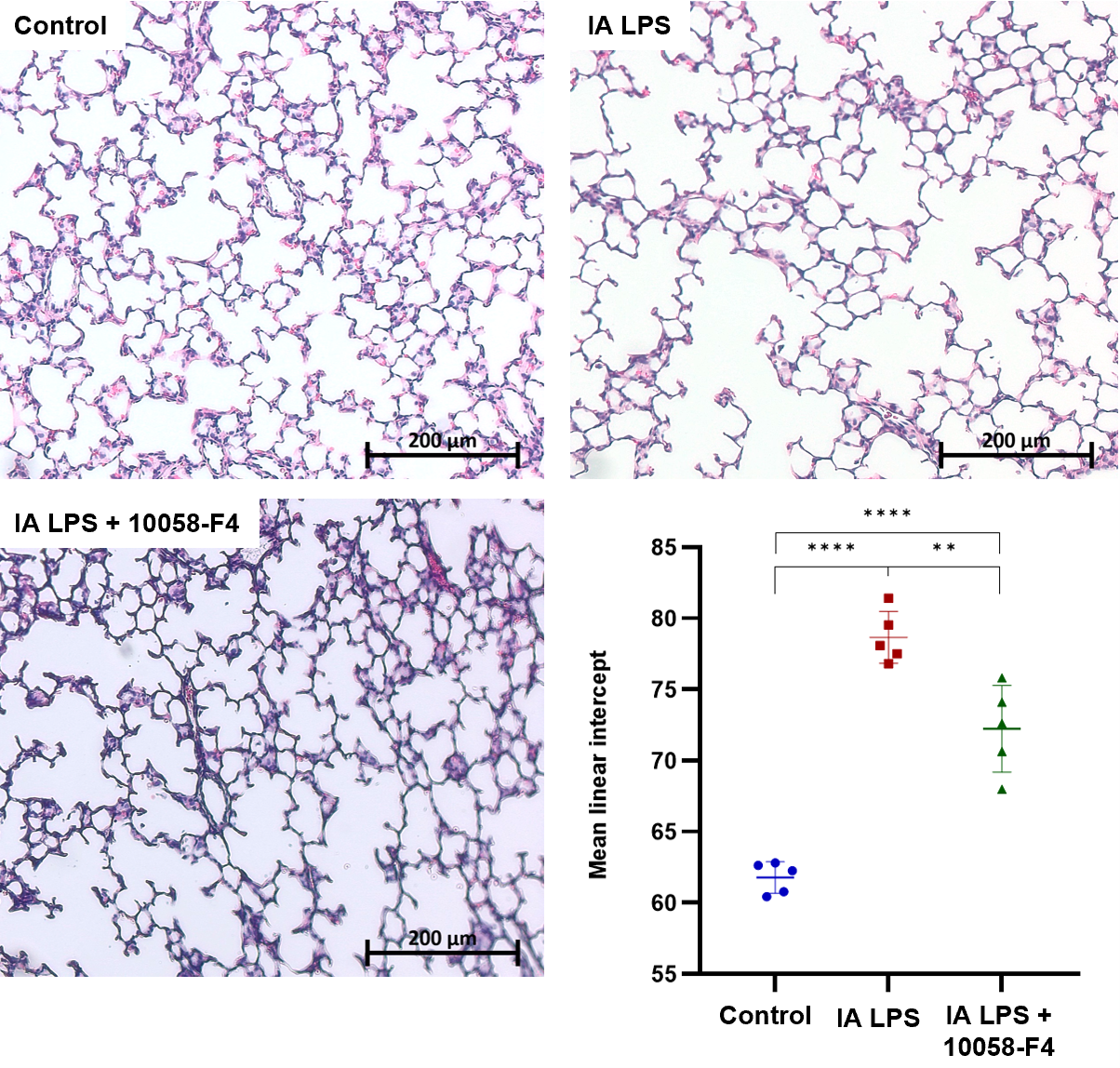Neonatal Pulmonology
Neonatal Pulmonology 4: Exosomes, Stem Cells, Maternal and Fetal Environmental Effects
143 - Prenatal c-Myc inhibition improves alveolar simplification induced by chorioamnionitis
Publication Number: 143.436
.jpg)
April W. Tan, MD (she/her/hers)
Assistant Professor of Pediatrics
University of Miami Leonard M. Miller School of Medicine
Miami, Florida, United States
Presenting Author(s)
Background:
Chorioamnionitis (CA) occurs in 85% of preterm births before 30 weeks’ gestation and is associated with lung inflammation, remodeling, and bronchopulmonary dysplasia. The transcription factor c-Myc is downstream to multiple growth and pro-inflammatory pathways. We previously reported overexpression of lung c-Myc associated with CA-induced lung inflammation and remodeling. We hypothesize that placenta c-Myc is overexpressed in CA, and c-Myc modulates placental inflammation and CA-induced lung injury and remodeling.
Objective: To determine the effect of c-Myc inhibition on placental inflammation and CA-induced lung injury and remodeling.
Design/Methods: Pregnant Sprague-Dawley rats were randomized into 3 groups: Intraamniotic (IA) saline injections only (Control); IA lipopolysaccharide (LPS) injections only; and IALPS + c-Myc inhibitor 10058-F4. Ultrasound-guided IALPS injections (E. coli O55:B5, 10μg per amniotic sac) were performed on embryonic day (E) 18; 10058-F4 (20mg/kg/dose) was administered intraperitoneally on E17 and E19. A group of animals was sampled 24 hours after IALPS for placental and fetal analysis, another group of animals delivered spontaneously, and lung tissue was harvested at postnatal day (P)14. Placenta c-Myc expression was assessed by Western Blot and immunohistochemistry. Lung alveolarization was assessed by mean linear intercept (MLI). Neutrophil infiltration and neutrophil extracellular trap (NET) formation in the placenta and membranes was assessed by colocalization of myeloperoxidase and citrullinated histone 3 on immunofluorescence.
Results:
IALPS increased c-Myc expression in placenta and fetal membranes by 4.7-fold and was mostly expressed in neutrophils. 10058-F4 treatment decreased c-Myc expression in LPS-exposed fetuses to levels similar to control (Figure 1). 10058-F4 treatment also ameliorated neutrophil infiltration and NET formation induced by IALPS in placenta and membranes suggesting that c-Myc inhibition decreases inflammation in CA (Figure 2). 10058-F4 treatment improved alveolar simplification induced by IALPS at P14 (Figure 3).
Conclusion(s): In a rat model of chorioamnionitis, prenatal c-Myc inhibition decreased placental inflammation with decreased c-Myc expression, neutrophil infiltration, and NET formation in placenta and membranes. Prenatal c-Myc inhibition improved lung alveolarization at P14 in rat pups exposed to chorioamnionitis. These findings suggest that c-Myc modulates placental inflammation and chorioamnionitis-induced lung injury and remodeling.


